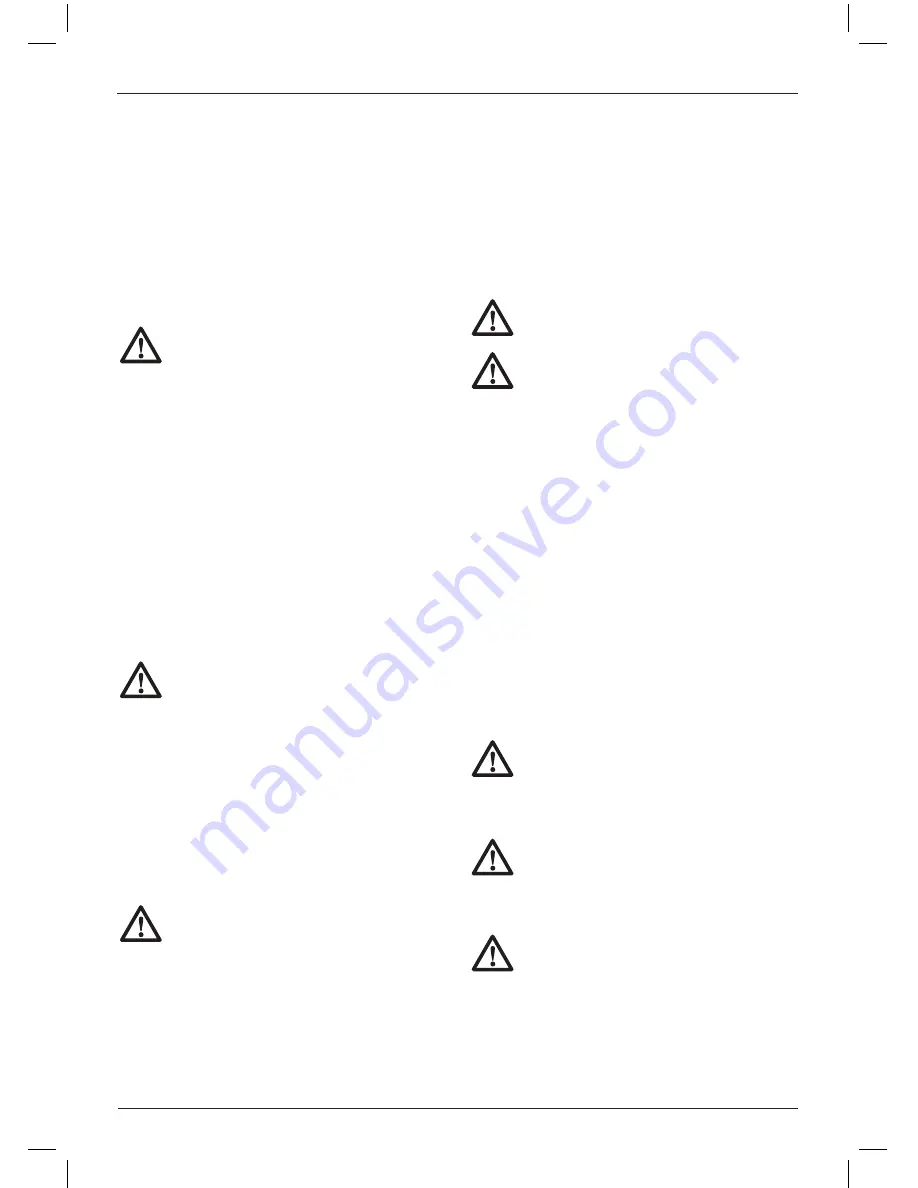
E NGLISH
8
To release bit, pull the chuck sleeve (e) back and
remove the bit.
Fitting a Chuck Adapter and
Chuck(Sold Separately)
Screw a chuck onto the threaded end of the
chuck adapter.
Insert the connected chuck and adapter in the
tool as though it were a standard SDS Plus
®
bit.
To remove the chuck, proceed as for
removing a standard SDS Plus
®
bit.
WARNING:
Never use standard chucks
in the hammer drilling mode.
Consult your dealer for further information on the
appropriate accessories.
Depth Rod (fig. 4)
TO ADJUST THE DEPTH ROD
Push in and hold the depth rod release button
( j ) on the side handle.
Move the depth rod (d) so the distance
between the end of the rod and the end of the
bit equals the desired drilling depth.
Release the button to lock rod into position.
When drilling with the depth rod, stop when
end of rod reaches surface of material.
OPERATION
Instructions for Use
WARNING:
Always observe the safety
instructions and applicable regulations.
1.
2.
3.
1.
2.
3.
Trigger Switch (fig. 1)
To start the rotary hammer, depress the trigger
switch (a). To stop rotary hammer, release the
switch.
VARIABLE SPEED
The variable speed trigger switch (a) permits speed
control. The farther the trigger switch is depressed,
the higher the speed of the drill.
LOCK-ON BUTTON
WARNING:
Be sure to release the
locking mechanism before disconnecting
the plug from the power supply. Failure to
do so will cause the hammerdrill to start
immediately the next time it is plugged in.
Damage or personal injury could result.
The lock-on button (i) is for use only when the rotary
hammer is stationary, mounted in a drill press stand
or for chipping applications.
Before using the tool each time, be sure that the
lock-on button release mechanism is working
freely. For continuous operation, press and hold
the trigger switch (a); press the lock-on button (i);
release the trigger switch and then release the
lock-on button.The tool will continue to run.
To stop the tool in continuous operation, quickly
press and release the trigger switch.
Proper Hand Position (fig. 3)
WARNING:
To reduce the risk of serious
personal injury,
ALWAYS
use proper
hand position as shown.
WARNING:
To reduce the risk of serious
personal injury,
ALWAYS
hold securely
in anticipation of a sudden reaction.
Proper hand position requires one hand on the side
handle (c), with the other hand on the main handle
(b).
Overload Clutch
If the drill bit becomes jammed or caught, the drive
to the drill spindle is interrupted by the overload
clutch. Because of the forces that occur as a
result, always hold the machine securely with both
hands and take a firm stance.
Drilling Tools
The machine is intended for hammerdrilling in
concrete, brick and stone. It is also suitable for
drilling without impact in wood, metal, ceramic and
plastic.
Drilling (fig. 2)
WARNING:
To reduce the risk of
serious personal injury, turn tool off
and disconnect tool from power
source before making any adjust-
ments or removing/installing attach-
ments or accessories.
WARNING:
To reduce the risk of
personal injury,
ALWAYS
ensure
workpiece is anchored or clamped firmly.
If drilling thin material, use a wood
“back-up” block to prevent damage to
the material.
WARNING:
To reduce the risk of
personal injury,
ALWAYS
operate the
tool with the side handle properly
installed and securely tightened. Failure
to do so may result in the side handle
slipping during tool operation and
subsequent loss of control. Hold tool
with both hands to maximize control.
Содержание D25011K
Страница 1: ...D25011K ...
Страница 2: ...3 English Copyright DEWALT ...
Страница 3: ...a c b Figure 1 Figure 2 1 d a b e f ...
Страница 4: ...2 Figure 3 Figure 4 ...






















